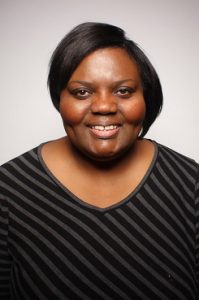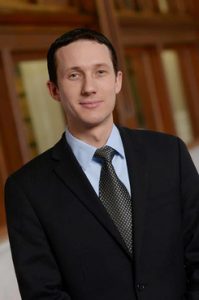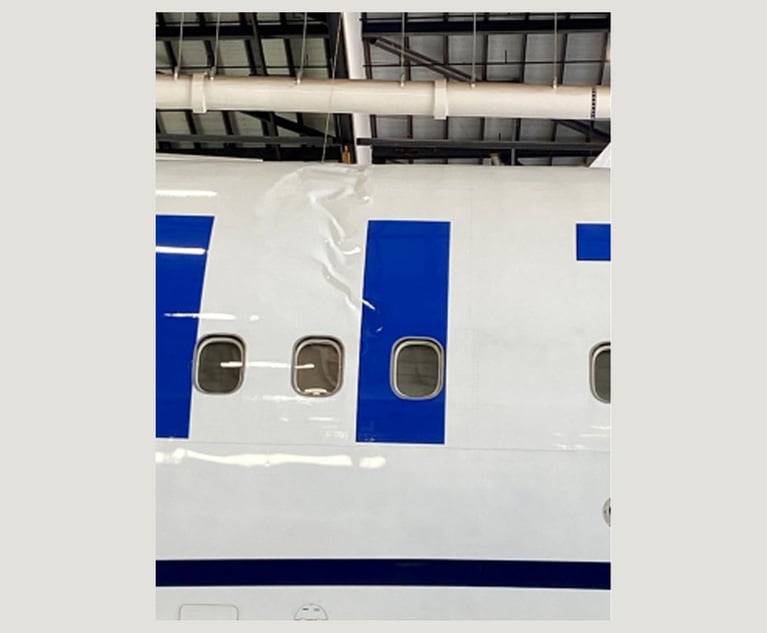A Journey of Self E-Discovery
As technology advances, firms must address the need for e-discovery training.
August 01, 2019 at 01:00 AM
9 minute read

There’s a regular process that occurs inside most law firms about every three years or so, depending on the expiration dates attached to whatever service contracts the organization is maintaining with outside e-discovery providers.
Debbie Reynolds, data privacy officer at Eimer Stahl, describes it as a pendulum, a process by which every few years firms take a look at their ongoing budgets and expenditures to reevaluate whether or not they would be better served by bringing e-discovery process in-house.
“About every three years you can kind of reconsider, ‘Are we doing the right thing? Are we looking at the right software? Do we have the right staffing?’” Reynolds says.
Buoyed by cloud-given independence from expensive infrastructure and hardware, it’s become easier for firms move the e-discovery process in-house. Still, if there’s one factor that could cause them pump the breaks, it’s training. Or more specifically, the investment of time and capital necessary to keep the right people up-to date on an area of practice that is ever-changing, thanks in large part to technology.
Why Training Goes Far
It’s better to get this out of the way up front: Walking into the office one morning and saying, “Hey guys, we do e-discovery now” is not an option, even if a firm does plan to sink a bundle into erecting a sophisticated infrastructure.
 Debbie Reynolds, Data Privacy Officer and Director with EimerStahl Discovery Solutions.
Debbie Reynolds, Data Privacy Officer and Director with EimerStahl Discovery Solutions.Investing in an array of high-powered e-discovery tech and software is all well and good, but putting it into the hands of an untrained staff is still akin to tossing a set of Porsche keys to someone who slept through the entirety of drivers ed. As David Hasman, litigation support manager at Bricker & Eckler, says, “The reality of it is that if you don’t have talent to drive that technology, that technology is useless.”
He acknowledges that while every practice group within the firm may not need e-discovery, there’s still enough of an overlap to make some general knowledge on the subject a worthwhile pursuit. Most of the incentive begins and ends with clients, specifically responding to their questions about where the dollar signs in their legal bills originate.
“Really, the biggest spend from a client’s perspective when you’re facing litigation is typically the discovery. … You as a lawyer better be able to talk to your client and educate them on the process, why it’s important and the costs associated with it,” explains Joseph Tate, director of e-discovery and practice advisory services at Cozen O’Connor.
What’s more, with big data on the rise across companies of all sizes, the use for e-discovery tools and techniques extends far beyond legal matters. Firms that limit the number of trained employees across each department could be potentially depriving themselves of additional opportunities for revenue.
Hasman says the bulk of his firm’s relativity use isn’t even primarily related to e-discovery. For example, many of the firm’s clients have ties to the oil and gas industry, so Bricker & Eckler use custom applications in conjunction with Relativity to help manage the logistics of building pipelines both domestically and abroad.
“By owning the [e-discovery] technology, bringing it in-house, having subject matter experts, it’s allowed us to expand our portfolio into areas that we really would never be able to do if we vended work out all of the time,” Hasman notes.
Unlike firms, the factors driving e-discovery training in corporate legal departments may be less about creating new revenue streams and more about trying to keep up with market forces. The results from e-discovery company Exterro’s 2018 In-House Legal Benchmarking Report showed 69% of legal teams conducted most of their litigation in-house, a 50% increase from 2017.
A Teachable Moment (or Several)
So yes, training is a must for firms or legal departments looking to bringing e-discovery in-house—but that doesn’t mean it’s easy. Some of the challenges are more obvious than others, but almost all are insurmountable if an organization’s top leadership doesn’t get on board with training from the beginning.
Cozen O’Connor’s Tate notes that this problem can be a real possibility in law firms. “You still have some old school partners… who just don’t get it. They’re like, ‘Why are we doing this? This doesn’t make sense,’” he says.
To be sure, corporate legal departments aren’t immune to the whims of foot-dragging folks either. George Socha, a managing director in BDO’s forensic technology services practice, pointed out that some companies have never had a reason to focus on e-discovery. Still, a sudden spike in litigation can force their hand.
But necessity does not always translate to enthusiasm, at least in the eyes of some of the companies that Socha has spoken to about starting down the e-discovery path. “Their response is, ‘You’ve got to be kidding? This is what’s going on? This is insane,’” Socha says.
To be fair, e-discovery is a relatively dense subject to wrangle, and getting the material to make sense of it is one of the biggest challenges inherent to training. Even if trainees are enthusiastic to engage with the subject matter, the process can still be like trying to teach someone a second language.
For Tate, who is fluent in tech-speak, there’s a process of having to almost reverse engineer what he already knows to explain it in a way that is accessible for a non-tech audience. Some of the terms that have been known to spark confusion aren’t even among the more robust in the e-discovery lexicon—like “gigabyte.”
Once the groundwork for that basic level of understanding is laid the process does get easier. But it still takes time. And with firms and corporate legal departments striving for increased efficiency, convincing them to make time for e-discovery training might be a tough sell.
 David Hasman, Litigation Support Manager at Bricker & Eckler..
David Hasman, Litigation Support Manager at Bricker & Eckler..Of course, it’s not just a question of increasing training at legal departments and law firms, but also of making sure such training is conducted by professionals and covers topics that are specific for each organization. “If you’re training people on how to go out and collect from mobile devices then that’s probably a different trainer than regular messages,” Socha says. Eimer Stahl’s Reynolds sees training as a continuum, a practice that builds upon itself until some degree of proficiency starts to take hold. Teaching people the motions or mechanics of how to use a particular piece of software or equipment is one thing, but she thinks that proper training has to extend beyond the “how” and into the “why.” And that also takes time.
“You can teach someone how to open a database, do searching and things like that, but the thing that is harder to grasp is why you do a certain thing for a certain result. So a lot of time, people may have the tools but they may not know in what situation they need to use one tool or another,” Reynolds says.
Pay it Forward
Good news first: Many of the problems outlined above can be addressed via well thought out training regiments and a moderate expenditure of resources both old and new. The bad news is that there may be some light travel involved.
In May, Tate journeyed up to Cozen O’Connor’s office in Toronto to deliver one of his e-discovery road shows that serves as sort of a primer to the field, touching on fundamentals like reviewing, coding and producing. It’s potentially a more palatable alternative to hiring an outsider to conduct training at each of the firm’s far-flung locations. “When you have a firm that has offices all over the country, we feel it’s really important to get out there [and] get in front of the various offices,” Tate says.
Still, he can’t be everywhere at once. When it comes to knowledge, Tate appears to subscribe to a trickle down theory. He receives emails daily from The Sedona Conference or other sources containing fresh e-discovery case law and other developments in the field so that his curriculum remains up to date. “I’m doing that every day. … For me, who is ultimately the trainer, I have to make sure that I’m putting forth the effort,” Tate says.
And then there’s the associates program Tate and Cozen O’Connor developed that riffs on the concept of paying it forward. He and his team identified a group of 12 two- to five-year associates to train on e-discovery and eventually turn into subject matter experts in their own right.
The idea is that these people will then turn around and spread that knowledge among their own teams and co-workers. Tate views it as kind of a quid pro quo situation. “They get the benefit of having this knowledge, and then it helps us to kind of disseminate the information,” he notes.
Failing that, Tate has also been working on an e-discovery playbook that the firm’s employees will be able to access online. Variety is important in e-discovery training since one lawyer might not learn the same way as the person occupying the office next door.
Reynolds says Eimer Stahl deploys a variety of e-discovery training techniques, but one in particular may be helpful in cutting through the overall density of the subject matter. Over the period of a year, the firm collects questions from employees related to e-discovery and then compiles them into a top 10 list complete with answers. “And we’ll write a training manual so that they have a takeaway, so hopefully that top 10 list won’t come up next year.”
This content has been archived. It is available through our partners, LexisNexis® and Bloomberg Law.
To view this content, please continue to their sites.
Not a Lexis Subscriber?
Subscribe Now
Not a Bloomberg Law Subscriber?
Subscribe Now
NOT FOR REPRINT
© 2025 ALM Global, LLC, All Rights Reserved. Request academic re-use from www.copyright.com. All other uses, submit a request to [email protected]. For more information visit Asset & Logo Licensing.
You Might Like
View All
'Incredibly Complicated'? Antitrust Litigators Identify Pros and Cons of Proposed One Agency Act
5 minute read

After Botched Landing of United Airlines Boeing 767, Unlikely Plaintiff Sues Carrier
5 minute read
Inside Track: Why Relentless Self-Promoters Need Not Apply for GC Posts
Trending Stories
- 1Understanding the HEMS Standard in Trusts
- 2Mergers Are About People, Not Paperwork: Here’s Why
- 3Wachtell Partner Leaves to Chair Latham's Liability Management Practice
- 4Morris Nichols Partners to Be Involved With PLI Program
- 5How I Made Practice Group Chair: 'Cultivating a Culture of Mutual Trust Is Essential,' Says Gina Piazza of Tarter Krinsky & Drogin
Who Got The Work
J. Brugh Lower of Gibbons has entered an appearance for industrial equipment supplier Devco Corporation in a pending trademark infringement lawsuit. The suit, accusing the defendant of selling knock-off Graco products, was filed Dec. 18 in New Jersey District Court by Rivkin Radler on behalf of Graco Inc. and Graco Minnesota. The case, assigned to U.S. District Judge Zahid N. Quraishi, is 3:24-cv-11294, Graco Inc. et al v. Devco Corporation.
Who Got The Work
Rebecca Maller-Stein and Kent A. Yalowitz of Arnold & Porter Kaye Scholer have entered their appearances for Hanaco Venture Capital and its executives, Lior Prosor and David Frankel, in a pending securities lawsuit. The action, filed on Dec. 24 in New York Southern District Court by Zell, Aron & Co. on behalf of Goldeneye Advisors, accuses the defendants of negligently and fraudulently managing the plaintiff's $1 million investment. The case, assigned to U.S. District Judge Vernon S. Broderick, is 1:24-cv-09918, Goldeneye Advisors, LLC v. Hanaco Venture Capital, Ltd. et al.
Who Got The Work
Attorneys from A&O Shearman has stepped in as defense counsel for Toronto-Dominion Bank and other defendants in a pending securities class action. The suit, filed Dec. 11 in New York Southern District Court by Bleichmar Fonti & Auld, accuses the defendants of concealing the bank's 'pervasive' deficiencies in regards to its compliance with the Bank Secrecy Act and the quality of its anti-money laundering controls. The case, assigned to U.S. District Judge Arun Subramanian, is 1:24-cv-09445, Gonzalez v. The Toronto-Dominion Bank et al.
Who Got The Work
Crown Castle International, a Pennsylvania company providing shared communications infrastructure, has turned to Luke D. Wolf of Gordon Rees Scully Mansukhani to fend off a pending breach-of-contract lawsuit. The court action, filed Nov. 25 in Michigan Eastern District Court by Hooper Hathaway PC on behalf of The Town Residences LLC, accuses Crown Castle of failing to transfer approximately $30,000 in utility payments from T-Mobile in breach of a roof-top lease and assignment agreement. The case, assigned to U.S. District Judge Susan K. Declercq, is 2:24-cv-13131, The Town Residences LLC v. T-Mobile US, Inc. et al.
Who Got The Work
Wilfred P. Coronato and Daniel M. Schwartz of McCarter & English have stepped in as defense counsel to Electrolux Home Products Inc. in a pending product liability lawsuit. The court action, filed Nov. 26 in New York Eastern District Court by Poulos Lopiccolo PC and Nagel Rice LLP on behalf of David Stern, alleges that the defendant's refrigerators’ drawers and shelving repeatedly break and fall apart within months after purchase. The case, assigned to U.S. District Judge Joan M. Azrack, is 2:24-cv-08204, Stern v. Electrolux Home Products, Inc.
Featured Firms
Law Offices of Gary Martin Hays & Associates, P.C.
(470) 294-1674
Law Offices of Mark E. Salomone
(857) 444-6468
Smith & Hassler
(713) 739-1250






